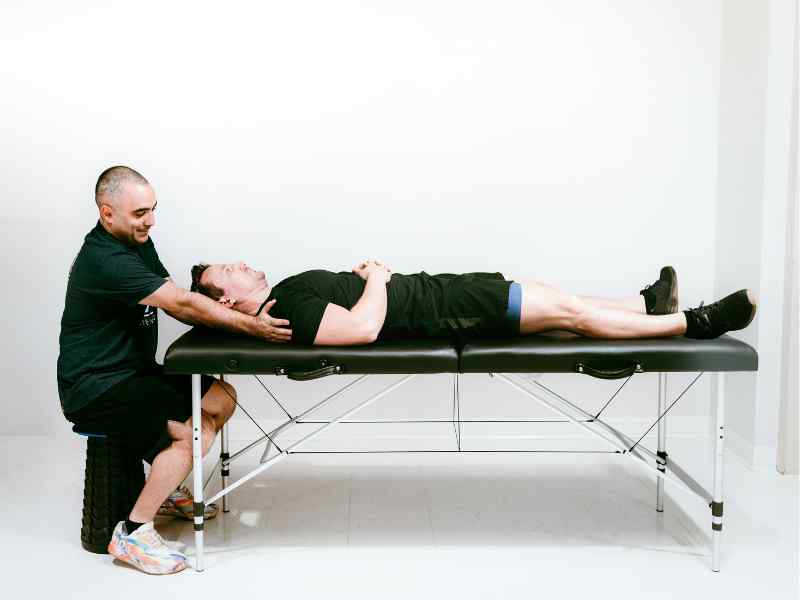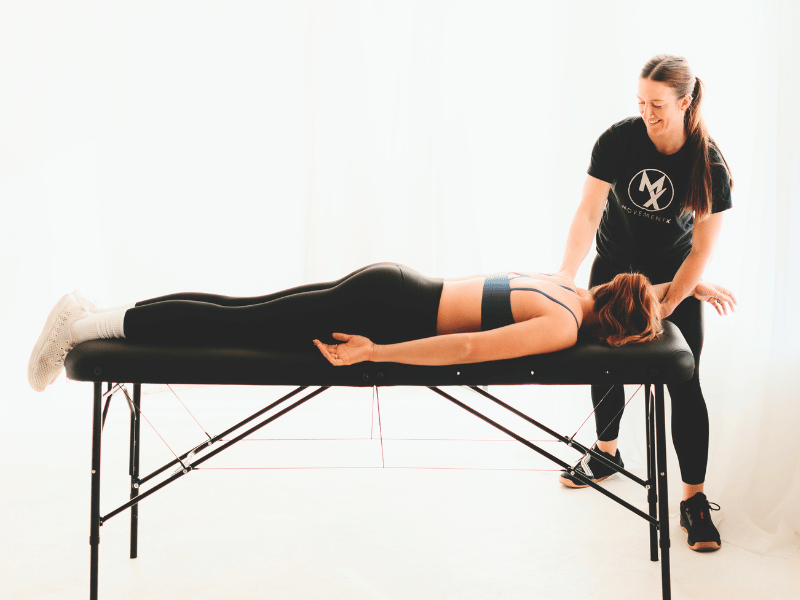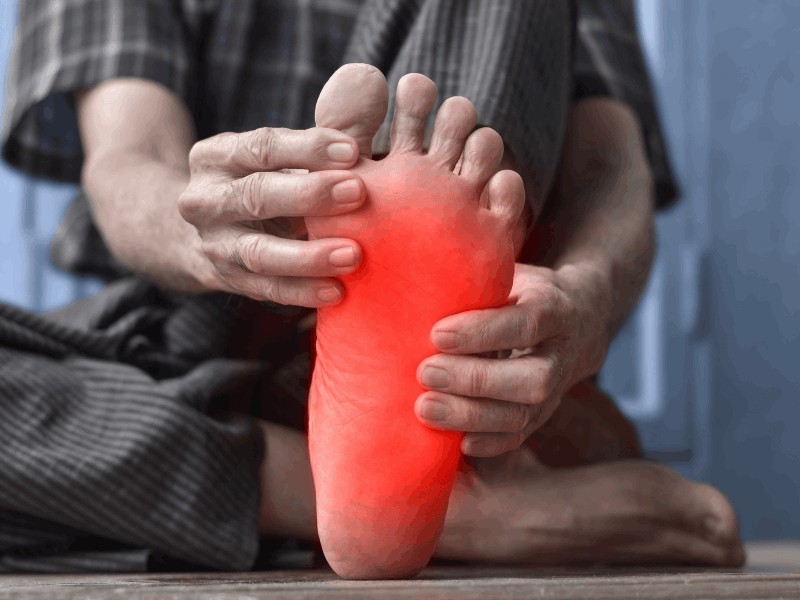Femoroacetabular Impingement (FAI)
Are you tired of the persistent hip pain that’s been disrupting your daily life? You’re not alone. Femoroacetabular impingement (FAI), a common hip condition affecting approximately 30% of the population, can cause significant discomfort and limit your activities.
FAI occurs when the hip joint is not shaped correctly, causing the bones to rub against each other and potentially cause structural changes. This friction can lead to pain, stiffness, and a reduced range of motion. While it may feel like a solitary struggle, understanding the details of FAI can empower you to take control of your health.
In this article, we’ll delve into the intricacies of FAI, including its symptoms, causes, and effective treatment options. We’ll explore the underlying factors that contribute to this condition, helping you gain a deeper understanding of your experience. Discover how physical therapy can play a crucial role in managing FAI and restoring your hip health.
What is Femoroacetabular Impingement (FAI)?
Femoroacetabular impingement (FAI), also known as hip impingement, is a condition where the hip joint is not shaped normally. This can lead to damage of the articular cartilage and the labrum due to impingement between the acetabular rim and the femoral head during movement, which causes the symptoms of FAI syndrome. You can have 3 different types of impingement:
- Cam impingement: A bony growth on the femoral head (the ball-shaped bone at the top of the thigh bone).
- Pincer impingement: An overgrowth of bone in the acetabulum (the socket in the pelvis that holds the femoral head).
- Combined impingement: A combination of both cam and pincer impingement.
Symptoms of FAI
- Pain: Primarily in the groin or hip, but it may also radiate to the buttock, thigh, or knee.
- Stiffness: Difficulty moving the hip joint freely.
- Limited range of motion: Inability to fully extend or rotate the hip, hip IR being the most commonly impacted.
- Clicking or popping: A sensation of the hip joint “catching” or “giving way.”
- Painful activities: Activities that involve bending the hip, such as squatting, climbing stairs, or sitting for extended periods, may worsen the pain
Causes of FAI
FAI can be present from birth or develop over time. Sometimes you won’t even know you have this bony malformation until you’ve overexerted yourself. Let’s explore the factors that can lead to FAI:
- Genetic Predisposition: FAI tends to run in families, indicating a potential genetic link. However, the exact genes involved and how they contribute to the condition are still being researched. It’s important to note that genetic factors are just one piece of the puzzle.
- Hip Dysplasia: Some people are born with hip dysplasia, a condition where the hip joint doesn’t develop properly. The socket portion (acetabulum) doesn’t fully cover the ball portion (femoral head), resulting in an increased risk for joint dislocation. Due to this joint instability, the body starts to form cam or pincer impingement as a natural reaction to create more stability.
- Physical activity: Repeated, excessive hip movements, such as those seen in sports like hockey, basketball, or football, during childhood and adolescence can contribute to the development of FAI. This constant stress on the hip joint may lead to abnormal bone growth and symptoms (2).
- Other hip conditions: Previous hip injuries or conditions, such as Perthes disease or slipped capital femoral epiphysis, can contribute to FAI.
Treatment for FAI
It’s important to note that the specific treatment plan for FAI will depend on the severity of the condition and the individual patient’s needs. In some cases, conservative treatments may be sufficient to manage symptoms. However, if the condition is severe or doesn’t improve with conservative measures, surgical intervention may be necessary.
Conservative treatment
Conservative treatment for femoroacetabular impingement (FAI) often involves a combination of the following:
- Physical Therapy: A physical therapist can design a personalized exercise program to strengthen the muscles around the hip, improve flexibility and ROM, and improve posture and biomechanics. This will be expanded on below, so keep reading!
- Nonsteroidal Anti-inflammatory Drugs (NSAIDs): Over-the-counter or prescription NSAIDs can help reduce pain and inflammation. Examples include ibuprofen, naproxen, and diclofenac.
- Corticosteroid Injections: In severe cases, corticosteroid injections can be used to provide temporary relief from pain and inflammation. These injections are typically administered by a healthcare professional.
Surgery
In severe cases, surgical intervention may be necessary to correct the abnormal shape of the hip joint.
- Hip Arthroscopy is the most common procedure for FAI as it is minimally invasive and corrects the FAI by trimming the bony rim of the acetabulum, shaving down the bump on the femoral head, and/or labral repair/debridement.
- Periacetabular Osteotomy (PAO) is performed for more severe cases of FAI due to hip dysplasia as a means of preserving your natural anatomy, this procedure helps reshape the hip socket to create a more stable/smoothly moving joint.
- Total Hip Arthroplasty is rarely performed for FAI alone, but can be a potential surgery if FAI is accompanied by joint OA that is so painful and debilitating for normal daily function.
How Physical Therapy Can Help
Physical therapy plays a crucial role in managing FAI. Based on a systematic review in 2019, physical therapy was more effective than injections in improving self-reported pain and function (4). Physical therapy interventions for FAI are focused on the following goals:
- Reduce pain: Through techniques like manual therapy, heat, and ice.
- Improve range of motion: Exercises can help increase flexibility and mobility.
- Strengthen muscles: Strengthening the muscles surrounding the hip can provide stability and reduce stress on the joint.
- Improve function: Physical therapy can help you return to your normal activities.
What if none of this helps?
Your physical therapist will be able to navigate when conservative management is no longer effective and more invasive procedures are necessary.
But don’t worry, you didn’t waste your time! Even though prehab for hip arthroscopy needs more research, preparing patients with good prehab programs is crucial.
Prehab can help identify problems early and improve physical and mental health before surgery. Prehab is the process of making patients stronger and healthier before surgery to get better results after. Studies show that prehab helps people of all ages and for different surgeries, including hip ones (5).
Best Exercises for FAI
Key treatments associated with positive outcomes include patient education, activity modification, manual therapy, and strengthening exercises (4). Your physical therapist will tailor a specific treatment program based on your individual needs. Some of the common exercises you may see for treatment of FAI may include:
- Hip mobility: Performing specific stretches and active mobility not just in hip flexors or hamstrings, but in your rotators as well is crucial. Hip switches and Hip CARs are good first exercises for this- your PT can help modify range and intensity as tolerated.
- Hip flexor / Quadriceps stretches: When the front of your hip is tight, it can encourage your joint to not move as smoothly. So performing a chair hip flexor/quad combo stretch helps manage this.
- Glute strengthening: To counter commonly tight hip flexors, strengthening your glutes is a must. Hip thrusts are one way to strengthen and load up your muscles within tolerable hip range of motion.
- Hip abduction strengthening: Your glute medius helps stabilize your leg in single leg activities, thus allowing your hip to have optimal roll and glide mechanics, keeping your joint moving smoothly. Wall clams are a good way to work on this specific movement in a weight bearing position.
- Core Strengthening: Proper trunk stability helps distribute force evenly through your hips and legs, mitigating FAI formation and irritation. Planks in any form will do the trick here.
Prevention of FAI
While there is no guaranteed way to prevent FAI, maintaining a healthy weight, strengthening the hip muscles, and avoiding excessive strain or sudden increase in exercise demand on the hip joint can help reduce your risk.
Living with hip pain can be frustrating and isolating. Remember, you’re not alone. If you suspect you may have FAI, seeking professional help is the first step toward finding relief. A healthcare provider can accurately diagnose your condition and develop a personalized treatment plan to help you regain your mobility and improve your overall well-being.
Sources
- https://orthoinfo.aaos.org/en/diseases–conditions/femoroacetabular-impingement/
- https://www.physio-pedia.com/Femoroacetabular_Impingement
- Chinzei N, Hashimoto S, Fujishiro T, Hayashi S, Kanzaki N, Uchida S, Kuroda R, Kurosaka M. Inflammation and Degeneration in Cartilage Samples from Patients with Femoroacetabular Impingement. J Bone Joint Surg Am. 2016 Jan 20;98(2):135-41.
- Mallets E, Turner A, Durbin J, Bader A, Murray L. SHORT-TERM OUTCOMES OF CONSERVATIVE TREATMENT FOR FEMOROACETABULAR IMPINGEMENT: A SYSTEMATIC REVIEW AND META-ANALYSIS. Int J Sports Phys Ther. 2019 Jul;14(4):514-524. PMID: 31440404; PMCID: PMC6670054.
- Punnoose A, Claydon-Mueller L, Rushton A, Khanduja V. PREHAB FAI- Prehabilitation for patients undergoing arthroscopic hip surgery for Femoroacetabular Impingement Syndrome -Protocol for an assessor blinded randomized controlled feasibility study. PLoS One. 2024 Apr 11;19(4):e0301194. doi: 10.1371/journal.pone.0301194. PMID: 38603694; PMCID: PMC11008823.
Share This Page
More Conditions We Treat
Found this page interesting? Learn more about other conditions we treat:




